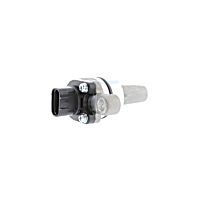{
"lazyNodes": false,
"abFitnotesFlag": false,
"abCrawlReviews": false,
"productOptionsCookie": false,
"orderDelayFlag": false,
"skipSessionCookie": false,
"covidMessage": false,
"fullTitleCookie": false,
"nrLoggerCookie": false,
"checkoutReviewCookie": false,
"productOptionSeqCookie": false,
"maintenanceFlag": false,
"bufferETACookie": false,
"multiShippingDiscountFlag": false,
"newFitmentFlag": false,
"surveyOptInFlag": false,
"crossSellFlag": false,
"skuMappingFlag": false,
"paySplitCookie": false,
"callDisableFlag": false,
"zipPaymentFlag": "u",
"hassleFreeReturn": false,
"lifetimeReplacement": false,
"cpn_off": false
}Toyota Pickup Speed Sensors
Shop Catalog
![]() WARNING: This product can expose you to chemical which is known to the State of California to cause cancer and birth defects or other reproductive harm. For more information go to www.P65Warnings.ca.gov.
WARNING: This product can expose you to chemical which is known to the State of California to cause cancer and birth defects or other reproductive harm. For more information go to www.P65Warnings.ca.gov.
![]() WARNING: This product can expose you to chemical which is known to the State of California to cause cancer and birth defects or other reproductive harm. For more information go to www.P65Warnings.ca.gov.
WARNING: This product can expose you to chemical which is known to the State of California to cause cancer and birth defects or other reproductive harm. For more information go to www.P65Warnings.ca.gov.
![]() WARNING: This product can expose you to chemical which is known to the State of California to cause cancer and birth defects or other reproductive harm. For more information go to www.P65Warnings.ca.gov.
WARNING: This product can expose you to chemical which is known to the State of California to cause cancer and birth defects or other reproductive harm. For more information go to www.P65Warnings.ca.gov.
Product Questions & Answers
Customer Guides
The Usual Culprits behind Toyota Pickup Speed Sensor Troubles
The speed sensor in your Toyota Pickup has other functions aside from sending speed information to the engine control system. The sensor helps the anti-lock braking system to maintain the directional stability of the wheel, and it assists in regulating the power steering pressure. That's why when you experience handling and stability problems while driving, you have to immediately check the speed sensor and do some troubleshooting. Here are some of the problems you might encounter:
Speedometer suddenly stops working
If the speedometer of your vehicle suddenly fails, a probably culprit of this problem is a faulty speed sensor. However, you should first test the connecting wires if they have power and the of the vehicle ground before you diagnose the speed sensor. If the wire and ground are working properly, then what you need to do is to check the speed sensor gear. You must refer to the owner's manual to find the right wiring diagram of your vehicle and to know the location of speed sensor and the speed sensor gear.
Disabled traction and stability control system
The speed sensor of your vehicle gauges the wheel speed in revolutions per minute or rpm and ensures that the wheel doesn't lock up when you step on the brakes. When the speed sensor malfunctions, the ABS light will switch on and the traction and stability control system will be disabled. If this occurs, you should check the ABS system first before checking the speed sensor. After you've found that the ABS system is working fine, you should diagnose the speed sensor and the sensor wheel area. Since you already have your hands on the sensor, you should clean the parts and the area around it as well.
Bad transmission timing
When you feel that the clutch of your vehicle is shifting at the wrong moment, it can be a sign that the speed sensor is causing a problem with the car's transmission. Another example of this is when you step on the gas pedal and you feel the transmission shift upward and then down suddenly. When this problem occurs, you have to remove the speed sensor from the transmission and check it using a voltmeter because it may already be defective.
Aside from checking the accurate speed of your vehicle while you drive, the Toyota Pickup speed sensor is designed to keep the cruise control functioning properly and to prevent the torque converter clutch to lockup. Over time, the speed sensor will show signs of wearing down and start to malfunction. Before any problems occur, here are some tips that can help you maximize the service life of your pickup's speeds sensor:
Inspect the speed sensor periodically.
The best way to keep your Toyota Pickup speed sensor functioning properly is by checking its condition at least once every year. Most speed sensors installed on Toyota vehicles that have a four-wheel disc system are located at each wheel hub. However, on some models, they are mounted on the vehicle's differential housing. To be sure, you should refer to the car owner's manual. Once you have located the speed sensor, you have to check its connectors if they are still in good condition. Aside from that, you should also inspect the sensor's gears if they are properly connected to the shaft.
Make sure that the speed sensor has the right voltage.
Before the speed sensor of your pickup truck becomes suspect to some problems, you need to test it and see if it has good voltage. You can do this with the help of a voltage meter to check the speed sensor's wiring. The sensor has to be removed from the vehicle and placed on a flat surface. The voltmeter should read at least 0.5 volts and fluctuate to determine if the speed sensor still has the right amount of voltage. Otherwise, it could already be worn-out or defective.
Clean the speed sensors.
You may think that the speed sensor of your car is already malfunctioning because it is showing various problematic signs. However, it just might be the dirt on the sensor's surface that's causing all the problems. You can clean the speed sensor simply by removing it from its housing and using a degreaser spray. When you wipe the sensor with a clean rag, make sure to clean it gently because the top portion of the sensor is very sensitive.








